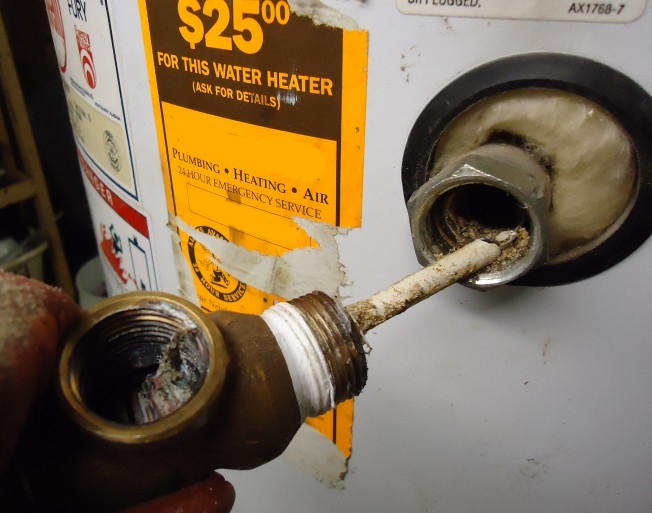Just about everyone will have his or her own theory in relation to How to Maintain Your Water Heater & Prolong its Life.

Warm water is essential for everyday convenience, whether it's for a rejuvenating shower or cleaning dishes. To ensure your hot water system runs successfully and lasts much longer, regular maintenance is vital. This short article gives practical suggestions and understandings on just how to maintain your home's hot water system to stay clear of disruptions and expensive fixings.
Intro
Maintaining your home's hot water system may appear challenging, however with a couple of straightforward actions, you can ensure it operates smoothly for many years ahead. This overview covers every little thing from understanding your hot water system to DIY upkeep pointers and knowing when to call professional help.
Value of Preserving Your Warm Water System
Normal upkeep not just extends the lifespan of your warm water system yet additionally guarantees it runs effectively. Neglecting maintenance can bring about lowered performance, greater power costs, and also early failure of the system.
Indications Your Hot Water System Demands Maintenance
Knowing when your hot water system requires focus can prevent significant concerns. Look out for indicators such as inconsistent water temperature, weird sounds from the heating unit, or rusty water.
Purging the Hot Water Heater
Purging your water heater eliminates sediment buildup, enhancing effectiveness and extending its life.
Checking and Changing Anode Rods
Anode rods stop rust inside the tank. Evaluating and replacing them when worn is vital.
Facility Problems Requiring Professional Aid
Examples consist of significant leakages, electrical problems, or if your hot water heater is regularly underperforming.
Routine Expert Maintenance Conveniences
Professional upkeep can include comprehensive assessments, tune-ups, and making sure compliance with safety and security requirements.
Checking and Changing Temperature Setups
Adjusting the temperature level settings makes certain ideal performance and safety.
DIY Tips for Maintenance
You can perform numerous maintenance jobs on your own to maintain your hot water system in leading condition.
Looking for Leaks
Regularly check pipelines and links for leaks, as these can cause water damage and higher costs.
Comprehending Your Hot Water System
Prior to diving into upkeep jobs, it's useful to recognize the fundamental parts of your hot water system. Typically, this includes the water heater itself, pipelines, anode poles, and temperature controls.
Regular Monthly Upkeep Tasks
Regular regular monthly checks can help capture minor concerns prior to they intensify.
Examining Pressure Alleviation Valves
Checking the stress relief valve guarantees it operates correctly and prevents too much pressure build-up.
Insulating Pipelines
Insulating hot water pipelines reduces warm loss and can conserve energy.
When to Call a Specialist
While DIY upkeep is helpful, some problems require professional proficiency.
Conclusion
Regular upkeep of your home's hot water system is crucial for efficiency, longevity, and cost financial savings. By adhering to these ideas and understanding when to look for specialist assistance, you can ensure a trustworthy supply of warm water without unexpected disruptions.
How to Maintain an Instant Hot Water Heater
Before tinkering with your hot water heater, make sure that it’s not powered on. You also have to turn off the main circuit breaker and shut off the main gas line to prevent accidents. Also turn off the water valves connected to your unit to prevent water from flowing into and out of the appliance. 2. When you’re done, you have to detach the purge valves’ caps. These look like the letter “T” and are situated on either side of the water valves. Doing so will release any pressure that has accumulated inside the valves while at the same time avoid hot water from shooting out and burning your skin. 3. When the purge valves’ caps are removed, you have to connect your hosing lines to the valves. Your unit should have come with three hoses but if it didn’t, you can purchase these things from any hardware or home repair shops. You can also get them from retail stores that sell water heating systems. Read the user’s manual and follow it to complete this task properly. When the hosing lines are connected, open the purge port’s valves. 4. You should never use harsh chemical cleaners or solutions when cleaning your unit. Make use of white vinegar instead. It should be undiluted and you’ll probably use about 2 gallons. 5. Now flush your water heater. This task should probably take about 40 minutes. We can’t give you specific directions for this because the procedure is carried out depending on the type, model and brand of your heater. With that being said, refer to the user’s manual. 6. When you’re done draining the unit, you have to turn off the purge port valves again. Remove the hosing lines that you earlier installed on each of the water valves. Put the valve caps (purge port) back in their respective places and be very careful so as not to damage the rubber discs that are found inside these caps. 7. Now that everything’s back in place, check your user’s manual again to find out how to reactivate your water heating system. 8. Once it is working, turn one of your hot water faucets on just to let air pass through the heater’s water supply pipes. Leave the tap on until water flows smoothly out of it. https://www.orrplumbing.com/blog/2014/september/how-to-maintain-an-instant-hot-water-heater/
:max_bytes(150000):strip_icc()/how-to-drain-a-water-heater-2719055-hero-35f0548b0f1f42f0b13ba96a33ab8da2.jpg)
Do you enjoy reading up on What Kind of Maintenance Do Water Heaters Need?? Leave a remark down the page. We will be pleased to know your thoughts about this piece. In hopes that you visit us again soon. For those who appreciated our blog entry plz make sure you remember to share it. Thanks for being here. Return soon.
Book Today!